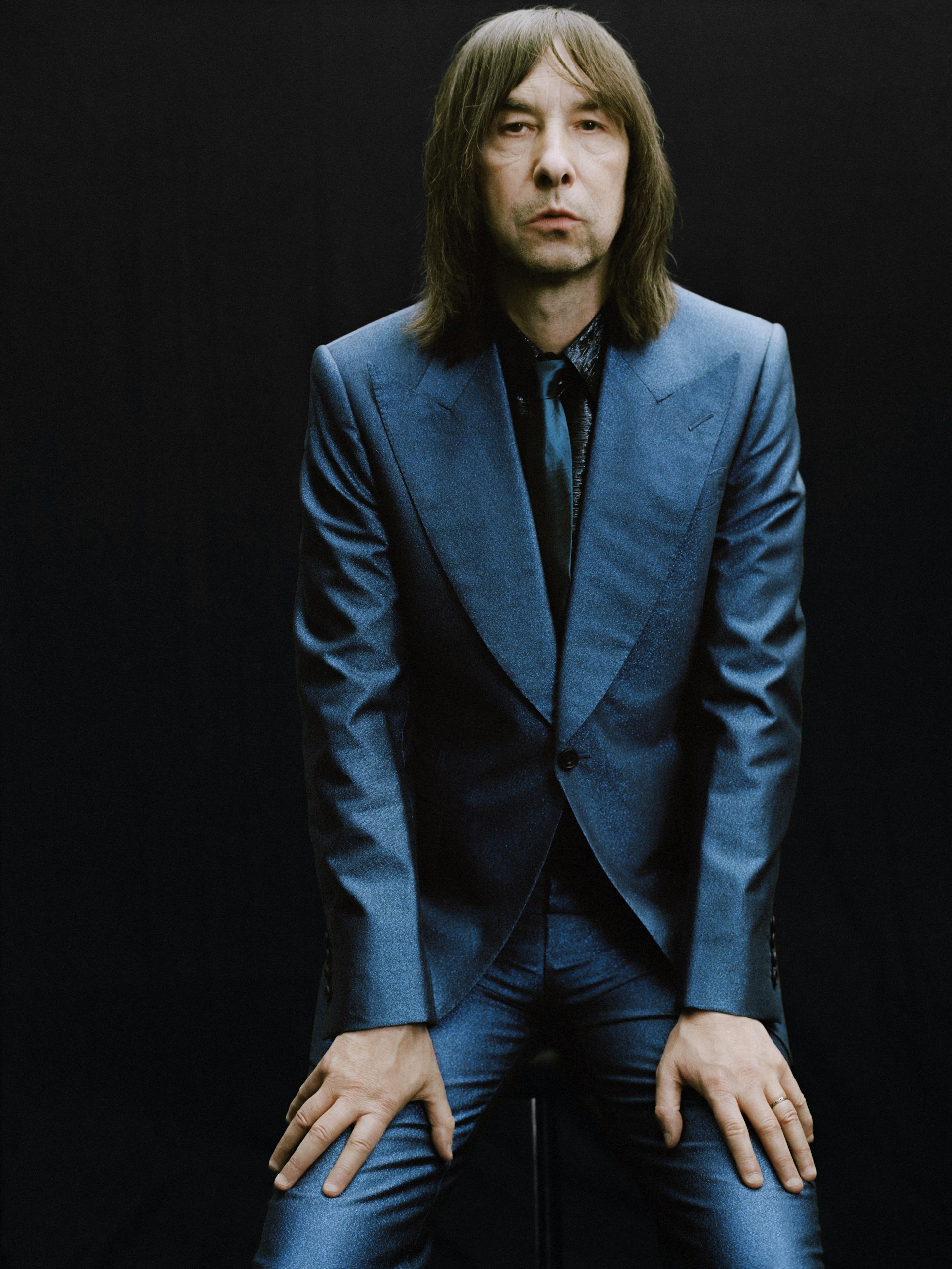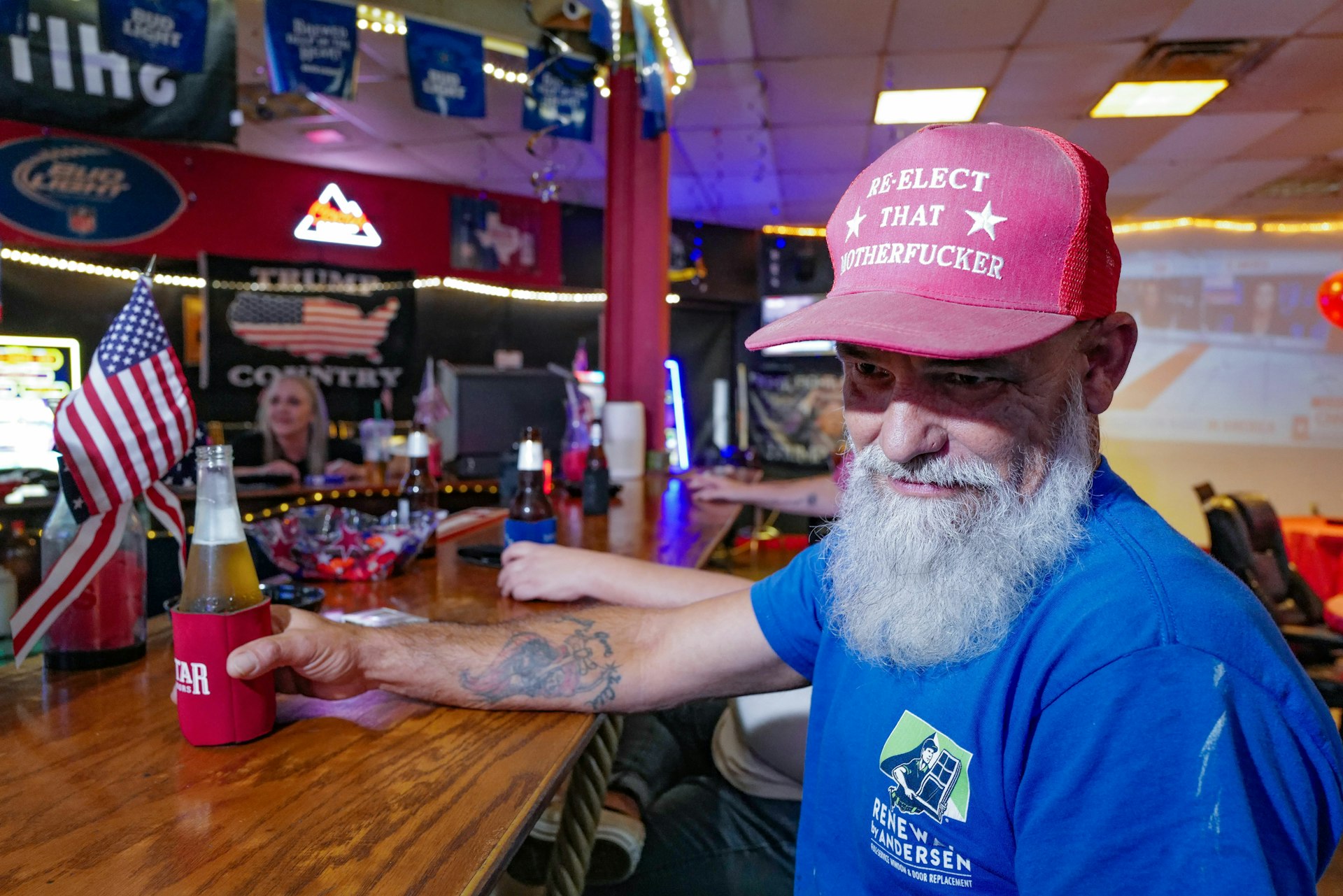Georg Baselitz
- Text by Tristan Manco
- Photography by Michael Dannenmann

Old guys in suits may not look like ideal rebels, but all it takes is a cheeky glint in the eye to prove that looks can be deceiving. With a comparably maverick status in the contemporary art world, its no surprise that this issue’s curator, Mark Gonzales, would sense a kindred spirit in the work of self-confessed outsider and highly influential German artist Georg Baselitz.
Since the 1970s, Baselitz has become world renowned for turning the language of painting on its head – quite literally. His renowned ‘upside down’ paintings feature recognisable subject matter, like people and landscapes, but by inverting them Baselitz usurps them of their real-world connotations and transforms them, radically, into conduits of an idea. This abstract approach, Baselitz explains, stems from “the belief that painting is not a mirror of reality. That is a myth. It’s about reinventing reality, and one of the best ways of destroying this myth is by painting the image upside down. It’s its own reality.”
And there are other reinvented realities at play in Baselitz’s work, as well as personal conundrums like the struggle for identity – namely, what it means to be a German artist in a postwar world. Born in 1938 as Hans-Georg Kern in East Germany, Baselitz’s art reflects on the painful trauma of the war’s destruction and the Communist regime that followed in its wake. As he told The Spiegel recently, “All German painters have a neurosis with Germany’s past: war, the postwar period most of all, East Germany. I addressed all of this in a deep depression and under great pressure. My paintings are battles, if you will.”
It’s these roots, and this societal tension, that fuelled the young artists rebellious tendencies. In his native East Germany he was taught to paint in a traditional style, which he later rejected after being exposed to abstract art during his studies in West Berlin. At first, the abstract expressionism embraced by the West symbolised a creative freedom that excited him and yet he also chose to reject it, preferring to remain outside prevailing movements. His first solo show in 1963 in Berlin certainly caused a stir and was the subject of an obscenity case, which led to two paintings being seized by the public prosecutor. As he recalls, “When I started it out it was my motto to be a bit peculiar, bit off the wall – and that comes through in my work and upsets people.”
“Even the stupidest person can draw like Raphael; but doing really miserable drawings is very hard because it takes a lot of intelligence.”
Baselitz’s paintings, sculptures and prints all have what he calls an “aggressive disharmony”, often dealing with disturbing subject matter that stirs up strong reactions. For the viewer he seeks to “remind them of their own conflicts, stir up what disturbs them, then offer them, if not a new peace of mind, at least an understanding of the disturbance”. His unique, unfiltered aesthetic may work against the conventionally critical eye, but for the viewer who manages to keep an open mind the payoff is art packed with raw emotion; a portal to a reinvented world.
In the extract that follows, Baselitz ruminates on what it means to be a man possessed by an insatiable need to draw. Like we say, it’s little wonder that the Gonz sees something in old Georg that resonates.
Questioning Myself
Drawings are like caprioles, they amaze you and scare you and terrify you. If I didn’t draw, my mind would feel numb, like in a mine. Not that drawing is fun; it’s no fun at all. But then again it’s not annoying. It’s like a language without understanding, and it makes sense only when I’ve learned some vocabulary – that takes a long time. At first I don’t know what I’m doing, then I think I do know. Ultimately I use it in a hygienic way – that is, it really uses me more. Since by now I know what happens if I don’t do it, it controls me more than I could ever control it. You can’t offer it just one finger; it’ll take the whole hand. It installs a cipher of something that was not on the paper. More cipher than thing. A picture has actually become a thing, just like Cezanne’s still apples. A drawing is the synthesis – that is, when you go to bed with Cezanne’s apples and then dream about Provence at night. I smoke more cigars when I draw than when I paint. I can’t draw while eating, telephoning, listening to music or conversing. I can, but the drawing turns into unbelievable crap. I find so-called telephone doodling repulsive. I don’t think one should place a compass on a drawing; you can draw better with a pendulum similar to the one that dousers use. A drawing is always naked. Everyone instantly sees the lovely, pleasant sides, which are so boring; but not everyone sees an ugly, unpleasant side because he simply doesn’t want to see it. A person doesn’t want to see certain meals. Is someone who forges drawings less dishonourable than someone who forges paintings? Today almost everyone draws like Beuys. Drawings always contain something of an acquired talent. Even the stupidest person can draw like Raphael; but doing really miserable drawings is very hard because it takes a lot of intelligence. I’m terrified when I see a drawing of mine done by someone else. I sign and date my drawings myself. – Georg Baselitz – Imerpia, Italy, July 1993
This extract was first published in English, translated by Joachim Neugroschel, in Diane Waldman, Georg Baselitz, Guggenheim Museum, New York, pp. 245-46.
Tristan Manco is a British graphic designer and the author of numerous books including Street Sketchbook and Raw + Material = Art published by Thames and Hudson.
Latest on Huck

How to shoot the world’s most gruelling race
Photographer R. Perry Flowers documented the 2023 edition of the Winter Death Race and talked through the experience in Huck 81.
Written by: Josh Jones

An epic portrait of 20th Century America
‘Al Satterwhite: A Retrospective’ brings together scenes from this storied chapter of American life, when long form reportage was the hallmark of legacy media.
Written by: Miss Rosen

Bobby Gillespie: “This country is poisoned by class”
Primal Scream’s legendary lead singer writes about the band’s latest album ‘Come Ahead’ and the themes of class, conflict and compassion that run throughout it.
Written by: Bobby Gillespie

Vibrant photos of New York’s Downtown performance scene
‘Balloons and Feathers’ is an eclectic collection of images documenting the scene for over two decades.
Written by: Miss Rosen

Picking through the rubble: Glimpses of hope in the US election results
Clambering through the wreckage of the Harris campaign, delving deeper into the election results and building on the networks that already exist, all hope is not gone writes Ben Smoke.
Written by: Ben Smoke

US Election night 2024 in Texas
Photographer Tom “TBow” Bowden travelled to Republican and Democratic watch parties around Houston, capturing their contrasting energies as results began to flow in.
Written by: Isaac Muk